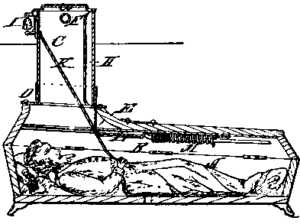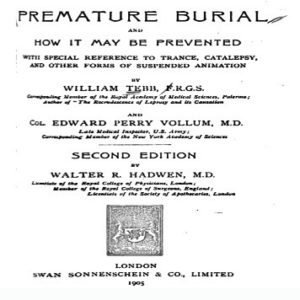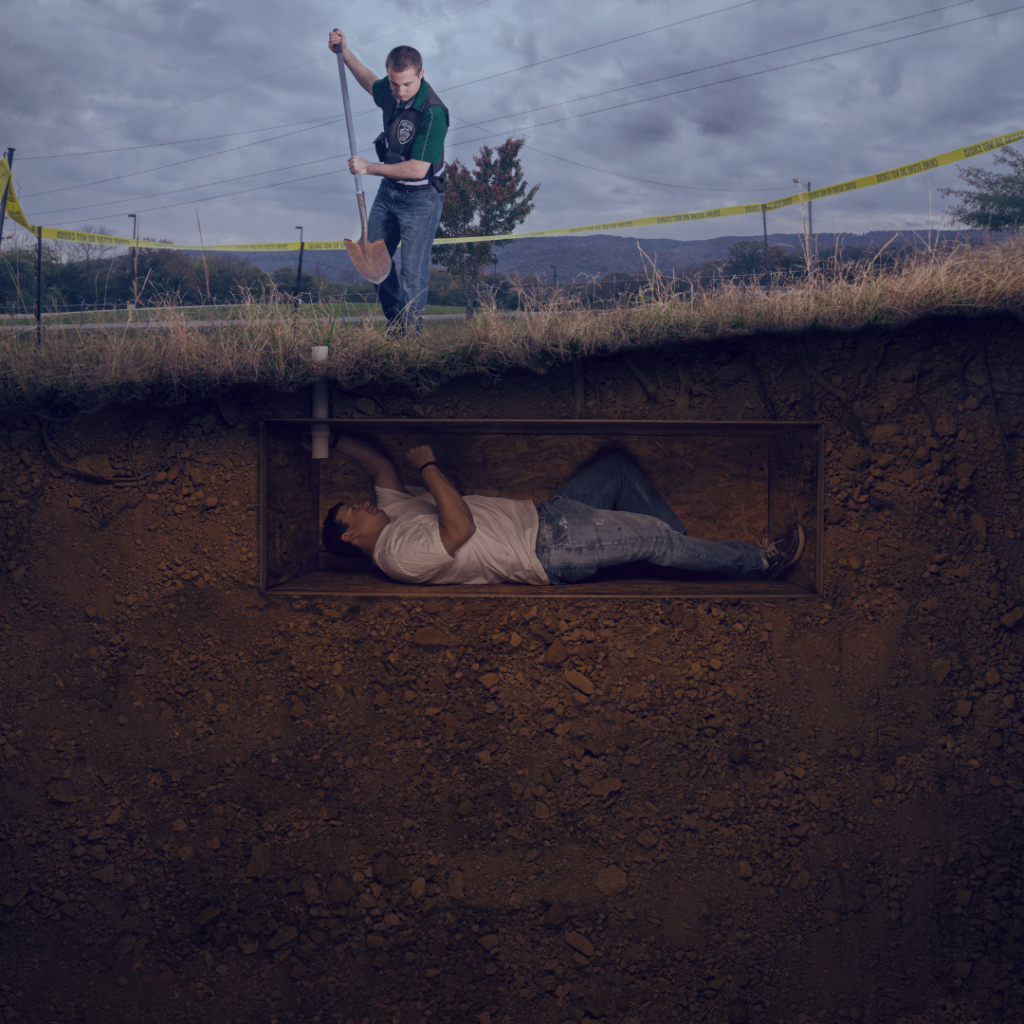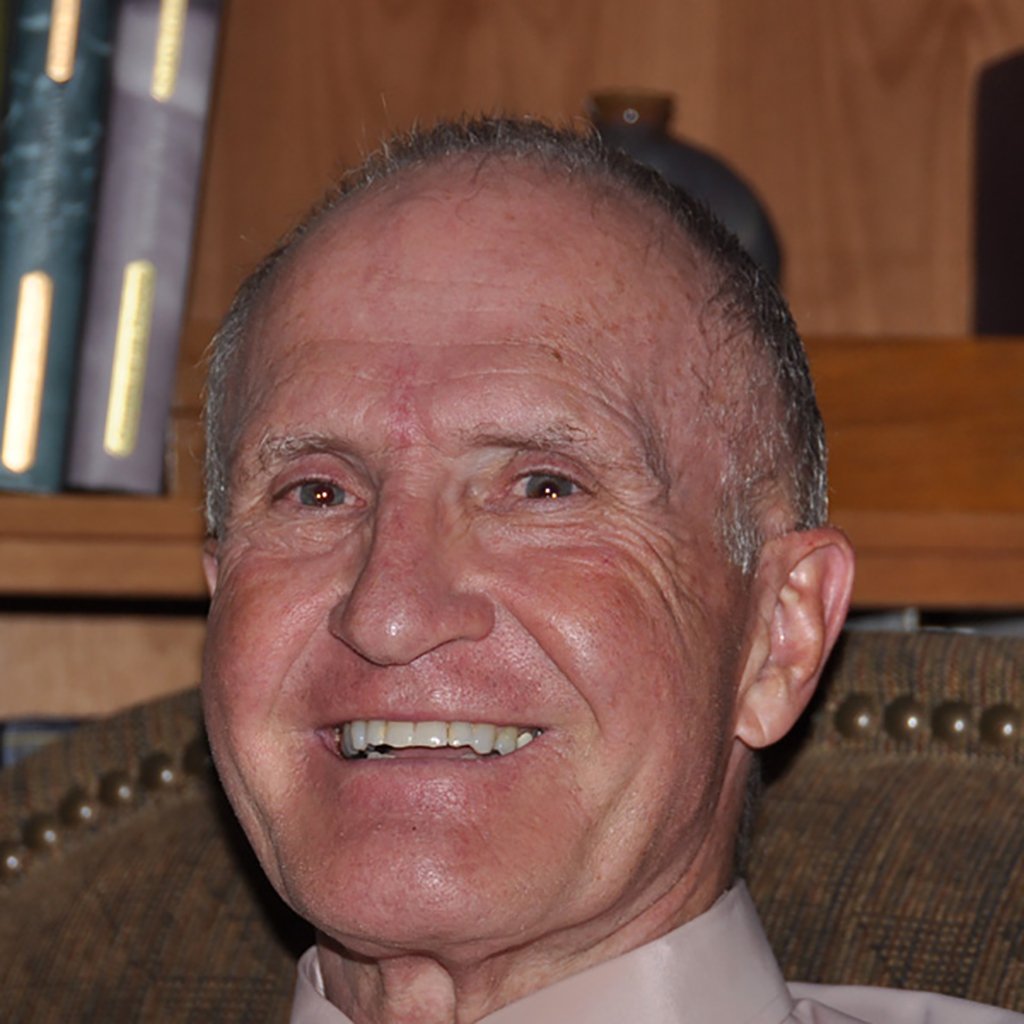At least as perplexing as the issue of dealing with revenants in the dear dead days beyond recall was the problem and great fear of being buried alive and how to prevent it. Apparently, the diagnosis of death was not a fully developed part of medicine back in the day.
There is even a name for it: Taphophobia–the fear of being buried alive—which has been the subject of nightmares, speculations, and controversies, since time immemorial. With today’s modern medicine and diagnostic tools, there is little chance of these fears becoming reality, unlike the practical concern for many centuries when it was a very real threat. There have been instances of verified premature burial for centuries; and numerous apocryphal accounts of the presumed-dead clawing themselves out of their coffins, to say nothing about revenants. The fear of premature burial reached its peak in the 18thand 19thcenturies.
As early as the 14th century, there are accounts of specific people being buried alive. Maybe apocryphal, but when his tomb was opened, the body of philosopher John Duns Scotus of the High Middle Ages was reportedly found outside of his coffin, his hands torn up in a way that suggests he had once tried to free himself. In 17th century England, it is documented that a woman by the name of Alice Blunden was buried alive. She was so stuporous after having imbibed a large quantity of poppy tea that a doctor holding a mirror to her nose and mouth pronounced her dead. Tea made from dried, unwashed seed pods contained morphine and codeine, strong sedatives. Her family quickly made arrangements for her burial; but two days after she was laid in the ground, children playing near her grave heard noises. Their school master went to check the gravesite for himself. He found that Blunden was still alive, but it took another full day to exhume her. By that time, she was so close to death that she was returned to her grave, where a guard stood by before deserting his post. The next morning, she was found dead, but only after struggling to free herself once more.
And modern medicine has not totally thwarted tales of being buried alive.
When Fagilyu Mukhametzyanov of Kazan, Russia collapsed at home following a heart attack in 2011, she was soon declared dead. A few days later–as she was lying in her casket at her own funeral–she woke up. She saw the mourners around her, crying and praying for her, quickly began to realize what was happening, began yelling, and was rushed back to the hospital. She lived for an additional 12 minutes in intensive care prior to dying once more, this time for good. The cause of death? Heart failure.
Walter Williams of Mississippi was pronounced dead on February 26, 2014. As CNN reported, the correct paperwork was completed, his body was put into a body bag; and he was taken to a funeral home. When his body was taken to the embalming room, his legs began to move. Then, the coroner noticed him breathing lightly. Williams was alive. It was–as it turned out–a short-lived reprieve. Just over two weeks later, he passed away for real.

In 1896, social reformer and anti-vaxxer [apparently the forebearers of modern American far right politicos and arch-conservative religions, which have existed for centuries], William Tebb, co-founded the London Association for the Prevention of Premature Burial with fellow germ-denier Walter Hadwen. The association campaigned for burial reforms to ensure the dead were truly, irrevocably dead. Due to the catatonic side effects of diseases such as cholera and malaria, newspapers were filled with accounts of prematurely buried individuals, subsequently dying in unimaginably traumatic ways.
There is an instance recorded in the July 22nd, 1890 edition of The Undertaker’s Journal about a woman who was buried alive:“The body of a woman, named Lavrinia Merli, a peasant, who was supposed to have died from hysterics, was placed in a vault on Thursday, 3rd July. On Saturday evening it was found that the woman had regained consciousness, had torn her grave-clothes in her struggles, had turned completely over in the coffin, and had given birth to a seven-month-old child. Both mother and child were dead when the coffin was opened for the last time.”
Egads!
Tebbs and Hadwen along with Edward Perry Vollum, MD–who was nearly buried alive himself–published an independent paper on the subject.

Front Page of Premature Burial
The work consisted of suggestions of several safety measures and several harrowing accounts of individuals later being discovered to have been buried alive.
It remains in print to this day and is as frightening to the contemporary reader as it would have been to the Victorian taphophobe. The Paris Review recorded the lasting horror in these accounts of suffering.
“There’s the man who sank into such a prolonged lethargy that he was thought dead until he ‘broke into a profuse sweat’ in his coffin; the young woman whose corpse was exhumed for reburial only to be discovered ‘in the middle of the vault, with disheveled hair and the linen torn to pieces… gnawed in her agony.’”
The Paris Review article suggested that many Victorian cemeteries were hives of questionable activity throughout their working day, to right such wrongs.
At the time, death and burial were not at all carefully regulated industries, many accounts of premature burial occurred because of misdiagnosis of death by a non-medical individual, such as a local priest or the town mayor. Even when medical doctors were involved, death certificates were widely issued by doctors who had not examined the body.
They were doctors, after all, and not open to question. It would take the great majority of them decades to learn how and why to wash their hands [See Ignaz Semmelweis]. After years of annoying efforts, Tebb was frequently dismissed by the wider medical community but remained a staunch campaigner for burial reform until his death in 1917—an indication of the persisting concern. In Tebb’s will, he explicitly stated that his body could only be disposed of following “unmistakable evidence of decomposition”. He was cremated a week after his death.


